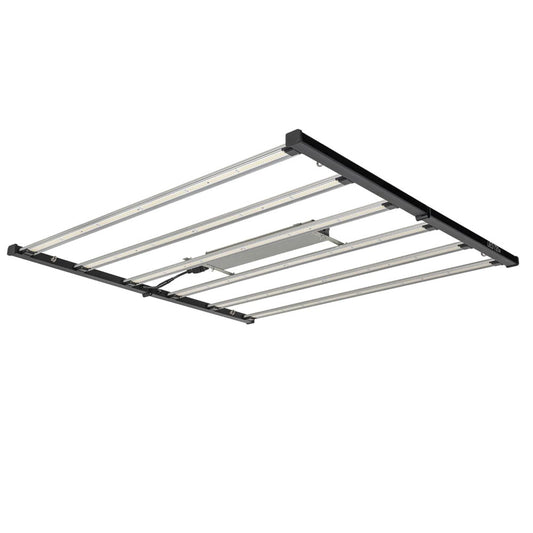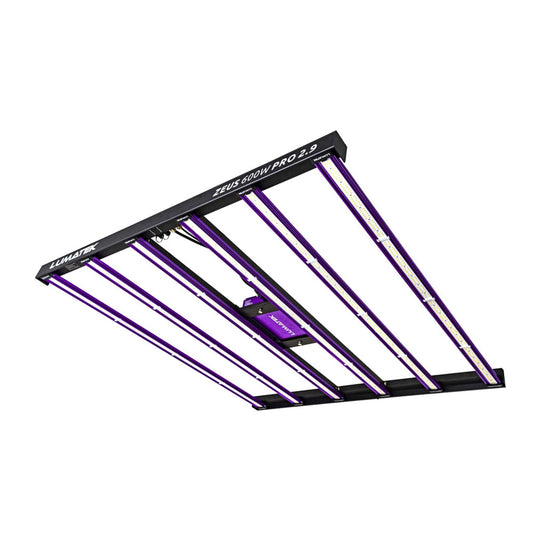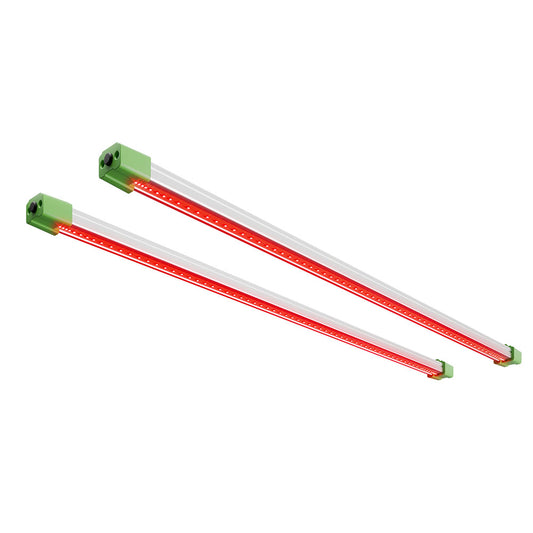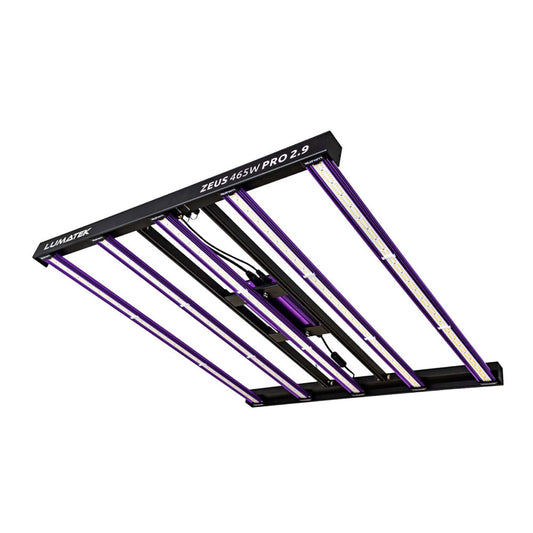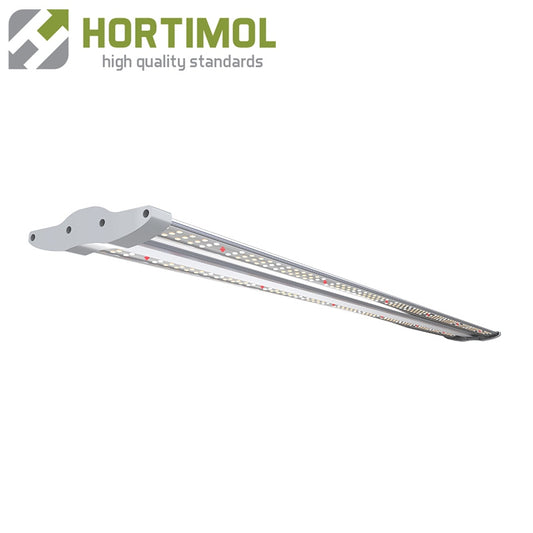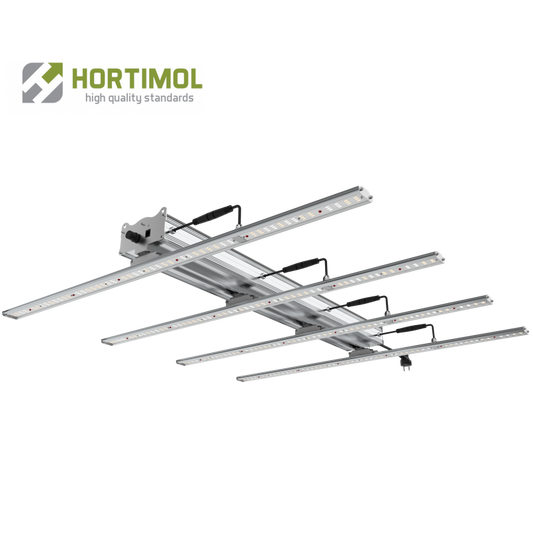Plant Lamp - Why LED?
In recent years, LED lamps have established themselves as a serious competitor to traditional MH and HPS lamps for plant lighting. This is due to several key advantages that LED lighting offers:
• LED plant lights are significantly more energy efficient and affordable than before.
• They emit less heat, which reduces the need for additional cooling and minimizes the risk of heat stress on plants.
• LED lights for greenhouses offer the ability to adjust the light spectrum, providing optimal lighting for the different stages of growth.
• Last but not least, the long life of LED plant lights is also a significant factor as they can run significantly longer without needing to be replaced, resulting in lower costs in the long run.
LED lighting for a greenhouse - what is important to know when choosing lamps for my plants?
When choosing LED lamps, there are several important factors that must be considered in totality in order to make a balanced choice. If you base your decision on just one of the parameters, you risk getting lamps that don't work for you.
Spectrum of LED lamps
This parameter is decisive for whether the lamp will be suitable for the entire life cycle of the plant or will be more useful in a certain phase. Today, LED lights are almost always used for the complete plant cycle (with a few exceptions for the initial stages of cloning and propagation). It is good to be familiar with the following aspects:
•PAR (Photosynthetically Active Radiation)Photosynthetically active radiation is a range that is considered "beneficial" in photosynthesis. These are the light frequencies from 400 to 700 nanometers. Until recently, it was considered that there was no "useful" light for plants outside this spectrum. However, it turns out that this spectrum can be extended to 750 nanometers, where the so-calledFar Red.Far Redthe light from your LED lamps affects the physiological processes of plants, such as:
•Photoperiodism: determining the day and night length that plants use to regulate flowering and growth.
• Plants use the ratio of red to far-red light to determine whether they are in shade. If there is more far red light, the plants "know" they are in the shade and begin to elongate their stems to reach more light. So you have to be careful with this spectrum during the growing season if you want your plants to stay compact. On the other hand, this spectrum has a beneficial effect on flowering. The transition from growth to flowering lasts shorter if, before the introduction of the short day, the plant experiences the change in the ratio between the red and far-red spectrum.
•Photosynthetic effect: Although not the main driver of photosynthesis, Far Red light can contribute to expanding the effective spectrum that plants use.
•PPF (Photosynthetic Photon Flux)is a quantity that measures the total amount of photons (light particles) in the PAR range emitted by your LED lamp in one second. It is measured in micromoles per second. A mole is a unit of measurement for a huge amount of atoms (or in our case, photons), and a micromole is one millionth of that. On our site you will see this value for each lamp, for example 1650 µmol/s. This is one of the most important parameters that characterize LED lighting for plants. However, it may be high but uneven. This will not please your plants and will reduce yield. LED lamps with uneven illumination are said to have "spots". You will know this from the following parameters.
Efficiency of LED lights for plants
Greenhouse lights can be effective in several ways. The productivity of the lamp is mainly looked at in relation to the energy it consumes. But it is also important to find out how consistently it illuminates the plants, because this will determine the quality and quantity of the yield. In the descriptions of our LED plant lights you can see:
•PPE or LED Lamp Efficiency:Shows the amount of photons (PPF) the lamp generates per joule of energy. The more, the more efficiently the LED lamp uses energy.
•CV (Coefficient of Variability) of lighting- Coefficient of variability is a universal quantity that, used in the context of LED lamps, indicates how evenly the lamp illuminates the plant. A lower CV means a more even distribution of light. It is often a better choice to choose a lamp with a lower PPF but a better (also low) CV.
Wattage of LED plant lights
Power is usually measured in watts (W) when it comes to LED plant lighting. Care must be taken - this only means how much electricity the LED lamp consumes per unit of time (hour). This is usually related to what PPF the lamp will generate, but not necessarily. If we are comparing a 300W LED lamp with a 600W LED lamp, we can expect that one will generate more PPF than the other. But for lamps with close values of energy used (eg 300W and 330W or 660W and 720W), the parameters we have mentioned above should be looked at to determine which lamp generates more photons and which is more efficient.
LED lamps - Price
The prices of LED lamps have fallen significantly in recent years. Quality has also improved and nowadays the most expensive plant lamp is not always the best choice. Many of the manufacturers of LED plant lights use the same components in their lights. For example, the leaders in LED lighting for greenhousesLumatekuse OSRAM components, as does the Dutch Hortimol, which offers a significantly lower price.
On the other hand, Chinese component manufacturers have significantly improved their quality over time, and some of them successfully compete with European manufacturers. For example, Spektramaster 720W uses the best quality Chinese diodes and we have excellent feedback from our customers who used expensive lamps and then switched to Spektramaster.
In summary - more and more the most expensive lamps are not the optimal choice. Yes, there are cases where they are exactly what the gardener needs, but if you are not very clear on why you need the most expensive model, it is probably not for you.
What LED light should I choose for my greenhouse?
Since the lamp is one of the elements that contribute to the final result (harvest), the ratio between the quality and quantity of the harvest and the cost of the elements
The skills of the gardener also matter in the choice of an ice lamp and its price range. Some of the expensive lights generate so much PPF that plants cannot absorb it effectively unless they are provided with specific conditions. In these cases, carbon dioxide should be used (CO2)and to make adjustments in irrigation and plant nutrition.
Ask in the store (or in the chat on the site) and we will help you with the choice!
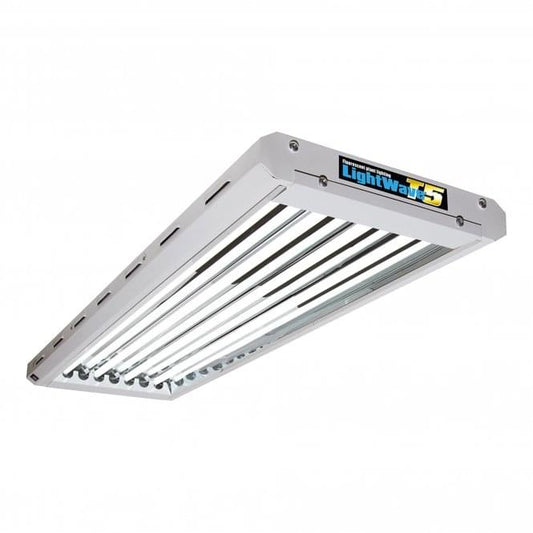 Sale
Sale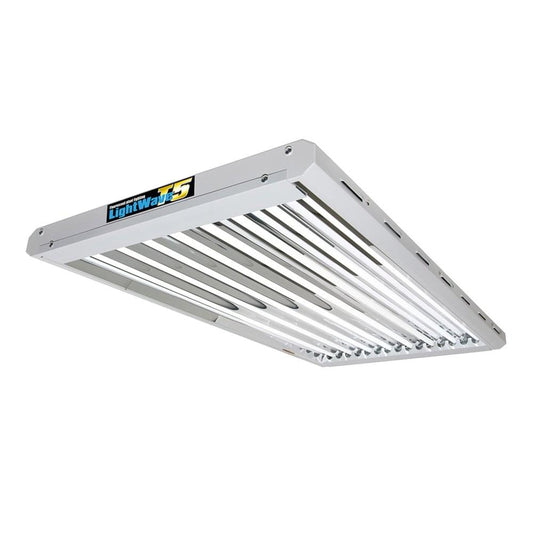 Sale
Sale
